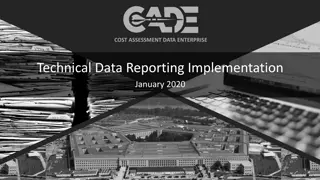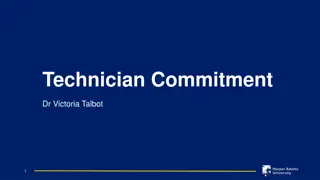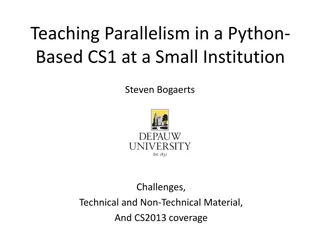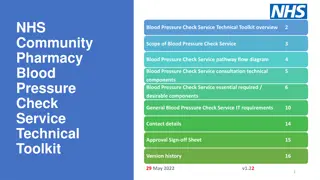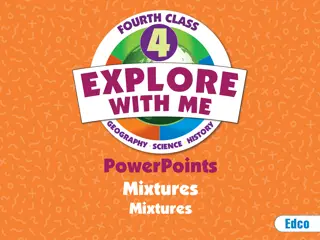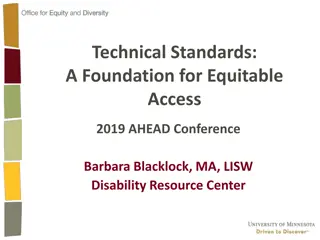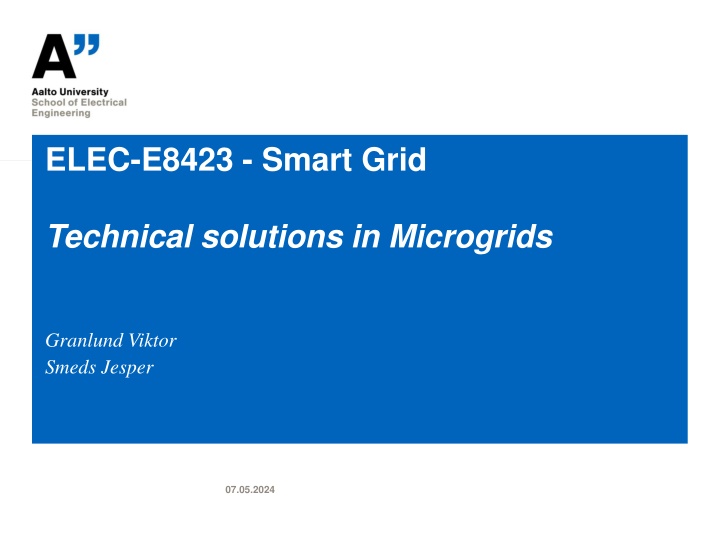
Smart Grid Technologies in Microgrids – A Comprehensive Overview
Explore the intersection of smart grid solutions and blockchain technologies in microgrids to enable peer-to-peer energy transfers, reduce stress on transmission lines, and promote green energy adoption. Learn about the benefits, challenges, and implications of implementing blockchain in microgrid systems.
Download Presentation

Please find below an Image/Link to download the presentation.
The content on the website is provided AS IS for your information and personal use only. It may not be sold, licensed, or shared on other websites without obtaining consent from the author. If you encounter any issues during the download, it is possible that the publisher has removed the file from their server.
You are allowed to download the files provided on this website for personal or commercial use, subject to the condition that they are used lawfully. All files are the property of their respective owners.
The content on the website is provided AS IS for your information and personal use only. It may not be sold, licensed, or shared on other websites without obtaining consent from the author.
E N D
Presentation Transcript
ELEC-E8423 - Smart Grid Technical solutions in Microgrids Granlund Viktor Smeds Jesper 07.05.2024
Table of Contents 1. Introduction Microgrids Blockchain Blockchain technologies Blockchain in Microgrids Case study Conclusions o o 2. 3. 4. 5. 07.02.2018 Page 2
Introduction Micro Grids What is a Microgrid? Small (electrical) grid within a community. What does it do? Enables peer-to-peer electricity transfers. Reduces stress on long-distance transmission lines. Promotes the use of green energy and reduces the need for large power plants. Challenge: Trading systems often inefficient. 07.02.2018 Page 3
Introduction Blockchain What is Blockchain? A virtual chain of individual blocks containing information of transactions. What does it do? Enables decentralized peer-to-peer transactions in real-time. Trading can be done through smart contracts or other applications made possible by blockchain technologies. Eliminates middlemen and ensures that transactions are controlled by the parties involved. Transactions are PUBLICILY available, but it is NOT possible to see what was sent or who sent it, only WHEN it was sent. 07.02.2018 Page 4
Introduction - Blockchain Material Validation through cloud computing 07.02.2018 Page 5
Introduction - Blockchain ... Everyone has a copy Comparable Control Book MATERIAL MATERIAL ... ... OWN PLATE OWN PLATE PREVIOUS CAR PLATE PREVIOUS CAR PLATE MATERIAL MATERIAL ... ... OWN PLATE OWN PLATE PREVIOUS CAR PLATE PREVIOUS CAR PLATE ... Decentralized database 07.02.2018 Page 6
Blockchain technologies In order to validate transactions miners are given tokens cryptocurrency in order to create a financial incentive for validating blocks. Validation of annual Bitcoin transactions equivalent PoW 33TWh Proof of Work (Bitcoin) Miners Proof of Stake Validators Delegated Proof of Stake - Delegates PoS DPoS 0,0016TWh 0,073TWh Human Screw Burj Khalifa 07.02.2018 Page 7
Blockchain in microgrids Why blockchain? Centralized power plants and distribution hold many challenges Transmission Losses Middleperson Data breaches 07.02.2018 Page 8
Blockchain in microgrids [1] 07.02.2018 Page 9
Case study Brooklyn Microgrid Brooklyn, New York 10x10 housing blocks P2P microgrid trading network Physical and virtual infrastructure Rooftop solar TransActive Grid Smart Meter PoS verification Exergy token 07.02.2018 Page 10
Conclusions Microgrids are a good way to integrate more renewable power production into the private sector, reducing stress on transmission infrastructure Blockchain technologies are capable of efficienct peer-to-peer energy transactions There are still technological and regulatory challenges standing in the way of blockchain energy trading 07.02.2018 Page 11
Source material used [1] Bernd Teufel, Anton Sentic, Mathias Barmet, Blockchain energy: Blockchain in future energy systems,Journal of Electronic Science and Technology, Volume 17, Issue 4, 2019, 100011, ISSN 1674-862X, https://www.sciencedirect.com/science/article/pii/S1674862X20300057 [2] Block Reward: Definition, How They Provide Incentive, and Future. (n.d.). Investopedia. Retrieved April 26, 2024, from https://www.investopedia.com/terms/b/block-reward.asp [3] Conway, L. (2022, February 18). Proof-of-Work vs. Proof-of-Stake: Which Is Better? Blockworks. https://blockworks.co/news/proof-of-work-vs- proof-of-stake-whats-the-difference [4] Magda Foti, Manolis Vavalis, What blockchain can do for power grids?, Blockchain: Research and Applications,Volume 2, Issue 1, 2021, https://www.sciencedirect.com/science/article/pii/S2096720921000038 [5] Esther Mengelkamp et al, Designing microgrid energy markets: A case study: The Brooklyn Microgrid, Applied Energy, 2018, https://www.sciencedirect.com/science/article/pii/S030626191730805X [6] Brown, J. (2021, September 16). How Algorand Solved the Blockchain Trilemma. Medium. https://medium.com/@josiah.alen.brown/how- algorand-solved-the-blockchain-trilemma-db8463fd17ad [7] Blockchain Trilemma: Scaling and Security Issues. (n.d.). Gemini. Retrieved April 26, 2024, from https://www.gemini.com/cryptopedia/blockchain-trilemma-decentralization-scalability-definition, https://www.gemini.com/cryptopedia/blockchain- trilemma-decentralization-scalability-definition [8] What Is Delegated Proof of Stake (DPoS)? (2021, September 11). Bybit Learn. https://learn.bybit.com/blockchain/delegated-proof-of-stake- dpos/ 07.02.2018 Page 12
Other issues . Send the presentation to matti.lehtonen@aalto.fi for check latest the day before the scheduled presentation 07.02.2018 Page 13





